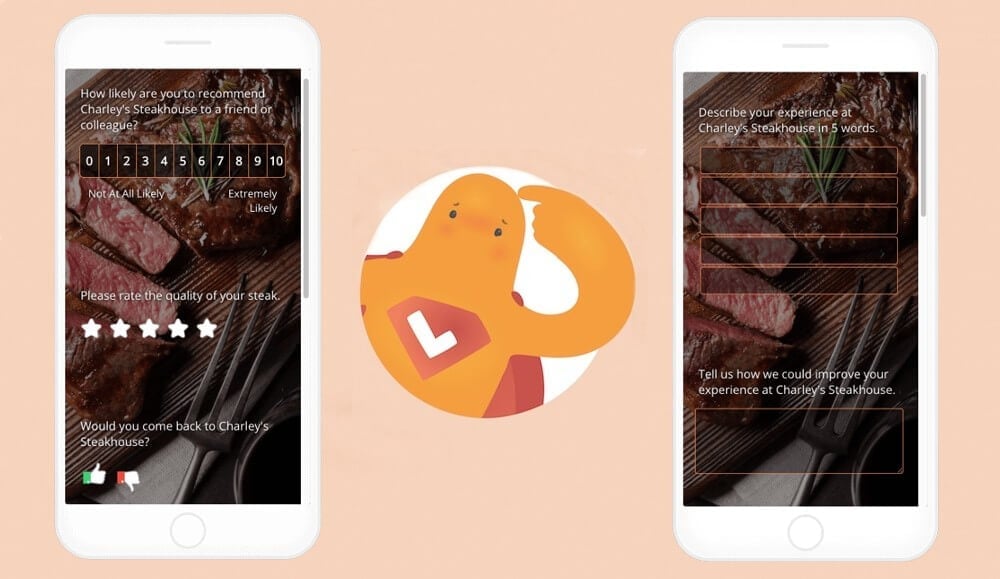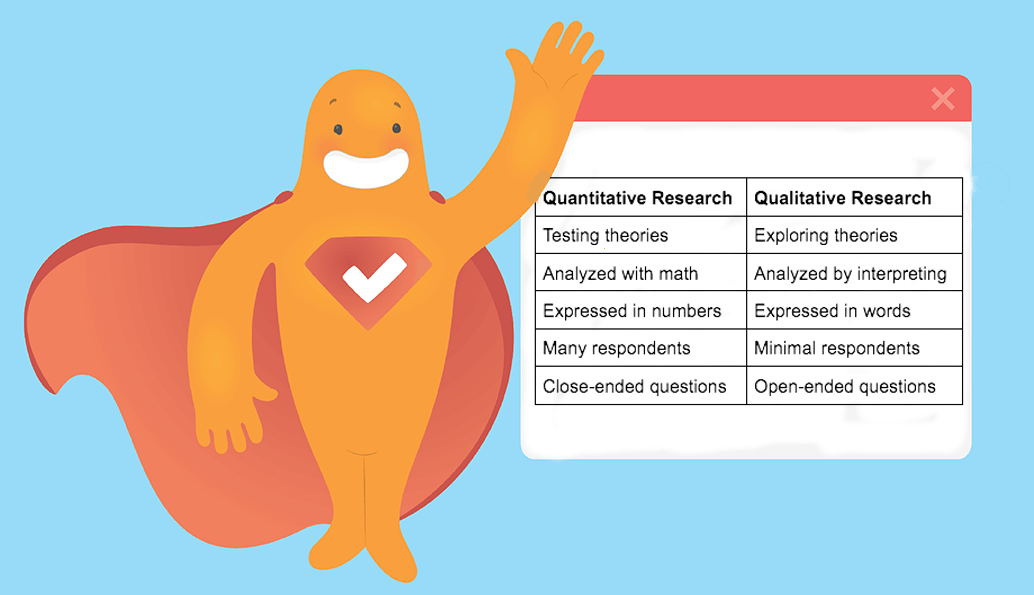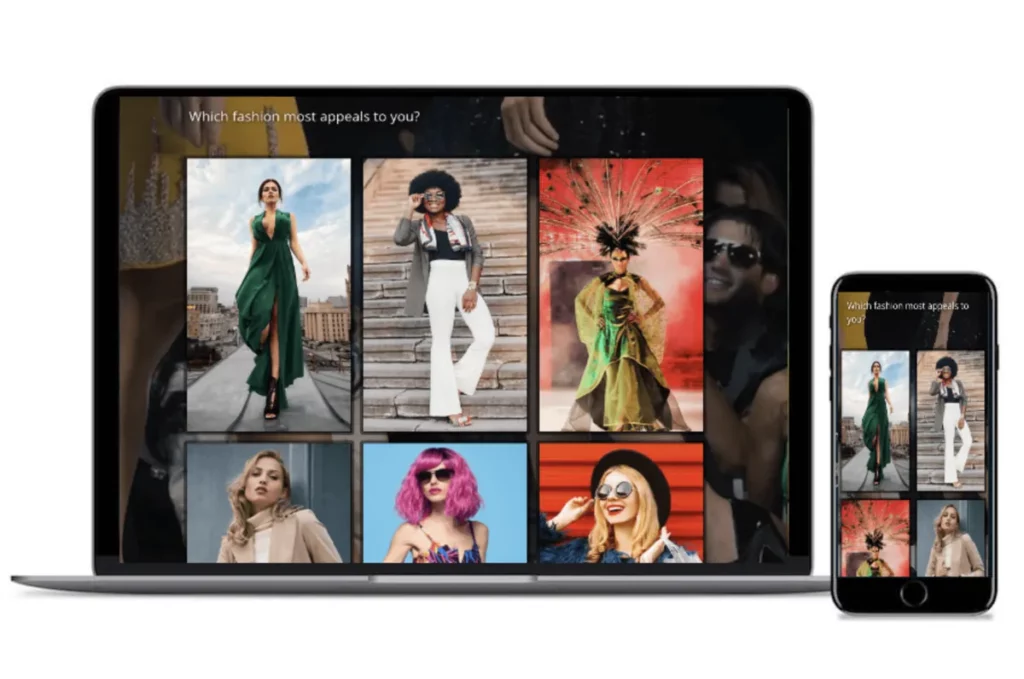Researchers and marketers collecting data through surveys typically break down their results into two different categories: quantitative data and qualitative data. So what is the difference between each form of data? When should you use quantitative surveys over qualitative surveys, and vice versa? In this blog, we look at the similarities and differences between qualitative and quantitative data and how they are both useful for data research and analysis.
Create your quantitative or qualitative survey, form, poll, or questionnaire now!
The Difference Between Quantitative and Qualitative Research
So are surveys qualitative or quantitative? The answer is, they can be both! Author and professor KR Howe writes, “Researchers should forge ahead with what works. Truth is a normative concept, like good. Truth is what works.” So, here’s a look at the two types of data in survey design so you can decide which is best for you (or take a mixed method approach and use both).
What Is Quantitative Research?
Quantitative data refers to information that can be quantified, in other words, it can be counted or measured, and given a numerical value. Quantitative research is expressed in numbers and graphs and is typically used to establish general facts about a topic. The most common quantitative methods include:
- Experiments: Situations in which researchers control and manipulate variables to determine cause-and-effect relationships.
- Observations: Observing subjects naturally without controlling variables. These observations are recorded as numbers.
- Surveys: Close-ended or multiple choice questions that are sent to a sampling of the population or a target audience.
What is Qualitative Research?
Qualitative data focuses on the qualities of users, in other words, it looks to understand the “why” behind the numbers. Qualitative research is expressed in words and is typically used to understand ideas, thoughts, or experiences. The most
common qualitative methods include:
- Interviews: Verbally asking open-ended questions to respondents.
- Focus groups: Discussion amongst a group of people about a topic, usually hosted by an interviewer or moderator.
- Ethnography: Becoming involved in a community or organization for an extended period of time to observe culture and behavior. These observations are recorded as words.
- Literature review: Survey of published works by other authors.
- Surveys: Open-ended questions that are sent to a sampling of the population or a target audience.
Quantitative vs Qualitative Research
Here is a handy guide on quantitative vs qualitative research that will help you in your studies and survey research design.
Quantitative and Qualitative Research Methods
Here are a few examples of each type of research method along with examples of quantitative and qualitative questions.
Quantitative Survey Method
You survey 300 patients at a hospital and ask them questions such as: “On a scale from 1-5, how satisfied are you with the level of care you received?” or “Yes or No: Would you return to this hospital for future medical needs?”
You then perform statistical analysis on the data and draw conclusions such as: “On average, patients rated their level of care a 3.8” or “On average, most patients would return for future medical care.”
Results from quantitative surveys are routinely reported in graphs and tables. Software applications can be used to calculate things like:
- Average scores
- The number of times a specific answer was chosen
- The correlation or causation between two or more variables
- The reliability and validity of the results
Qualitative Survey Method
You survey 20 patients and ask them open-ended questions such as: “How satisfied are you with your level of care?”, “What is the most positive aspect of your stay with us?”, and “What can be done to improve stays for future patients?”
Qualitative data is more difficult to analyze than quantitative data since answers are text-based. Based on the answers, your analysis may do any of the following:
- Track the occurrence, position, and meaning of words or phrases
- Examining the data to identify the common themes and patterns
- Study how communication works in social contexts
Mixed Survey Methods
Quantitative data and qualitative data can often work together. Close-ended questions can yield some hard facts, while open-ended questions can delve deeper. In fact, most surveys employ both, asking a series of close-ended questions followed by an open-ended question where the respondent can elaborate on their answers.
How to Ask Quantitative and Qualitative Survey Questions
Here are some of the types of questions to ask on your next survey.
Quantitative Survey Questions
- Single Selection: Allows respondents to choose just one option from a list of possible choices.
- Multiple Selection: Allows respondents to choose as many options as they want from a list of possible choices.
- Dropdown: Presents options in a dropdown menu.
- Matrix: These typically consist of a column of questions to the left and a row of answers across the top. SurveyLegend has created a unique type of matrix survey designed to improve response by making respondents scroll with every answer. Learn more about matrix questions.
- Opinion Scale: Also known as a Likert scale, this question type is an easy way to get quick insights into where respondents fall on a rating scale for a given topic.
- NPS: Also known as Net Promoter Score, a ranking from 1 to 10 to help researchers determine how happy a respondent is and how likely they are to recommend friends or colleagues.
- Rating: Using stars to convey satisfaction levels, just like a Google review.
- Sliders: An interactive survey tool that allows respondents to rate their input on a sliding scale.
- Emojis: Using faces to convey satisfaction levels.
- Thumbs: Using thumbs up or down to convey satisfaction levels.
- Picture Selection: A great way to engage respondents, image surveys provide visual appeal and allow respondents to answer by selecting a picture or photo.
- Picture Ranking: Rather than selecting a picture, this allows respondents to rank them through a drag and drop method.
As you can see, SurveyLegend allows you to use all of these types of questions: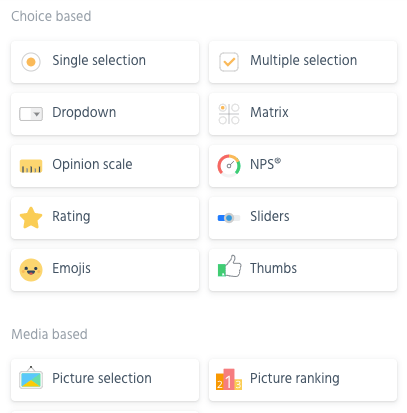
Quantitative Survey Example
In this example, we use three methods of asking quantitative questions: NPS, Stars, and Thumbs. You can see even more examples of each type of SurveyLegend survey in our blog 10 Different Types of Survey Methods + Pros & Cons.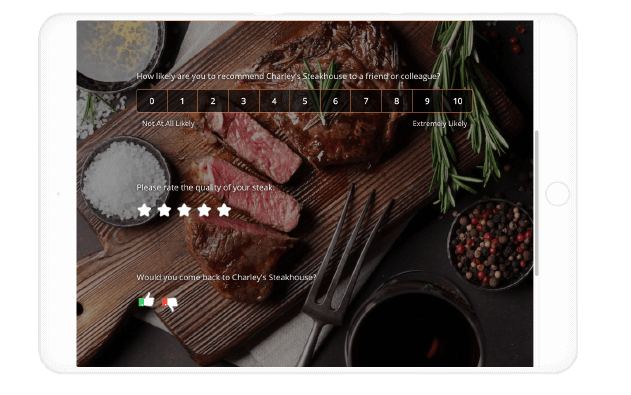
Qualitative Survey Questions
Qualitative questions are open-ended, so there aren’t many options when asking them. Respondents can be asked to leave comments in a text box or comment box, or multiple text boxes can be used. Respondents can also type in their own numbers, making this type of question both qualitative and quantitative.
As you can see, SurveyLegend allows you to ask all of these types of qualitative questions: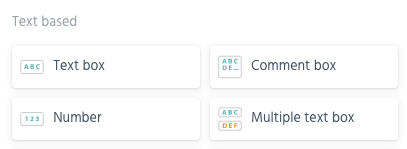
Quantitative Survey Example
In this example, respondents answer with single words and can provide longer, more thoughtful answers in the bigger text boxes.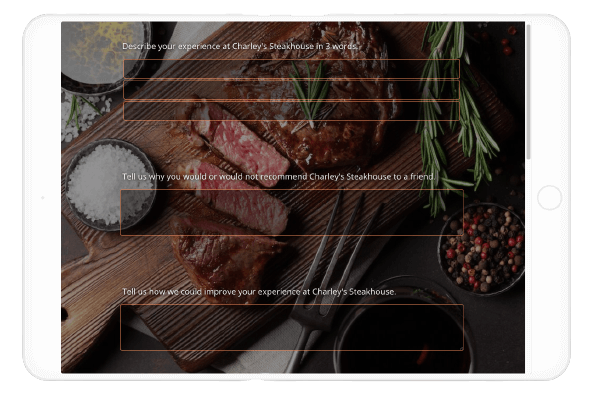
Conclusion
In research, both quantitative and qualitative survey design is important. In fact, many researchers employ both types of questions to collect as much data as possible, known as the “mixed method approach.” Whether you plan to create a quantitative survey, a qualitative survey, or a combination of the two, SurveyLegend has you covered! Our surveys are fun and easy to create, allowing you to ask many different types of questions and add imagery to your surveys. We also do a lot of data analysis for you! So what are you waiting for? Start today with SurveyLegend!
Do you regularly conduct surveys? Do you usually collect qualitative data, quantitative data, or a mixture of both? Which form of data do you find most helpful? Let us know in the comments.
Create your free quantitative or qualitative survey, form, poll, or questionnaire now!
Frequently Asked Questions (FAQs)
Quantitative data is quantifiable, meaning you can count or measure it using a numerical value. Qualitative data focuses on the qualities of users, i.e., it looks to understand the “why” behind the numbers through words.
Quantitative surveys ask close-ended or multiple choice questions for easy analysis. Qualitative surveys ask open-ended questions in which respondents write in their answers, which makes analysis more difficult. Most surveys use both methods.
A quantitative question is close-ended, often using multiple choice or scaled questions, e.g. On a scale of 1-10, how important is travel to you? A qualitative question is open-ended, e.g. What do you like best about traveling?
Which is better, qualitative or quantitative research?
Neither is “better” as both have a purpose in research. Often, you can use both methods and perform the “mixed method approach.”
